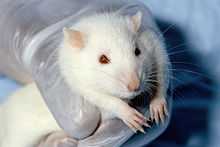International primate trade
The international trade in primates sees 32,000 wild non-human primates (NHPs) trapped and sold on the international market every year. They are sold mostly for use in animal testing, but also for food, for exhibition in zoos and circuses, and for private use as companion animals.
Countries involved
The United States imports around one third of all NHPs sold internationally, with the United Kingdom importing the second highest number. Japan, Russia, The Netherlands, France, and Taiwan also rank among the top importing countries.
The NHPs are exported from Indonesia, Malaysia, Kenya, Thailand, Philippines, Mauritius, Amazonian regions across South America, and China, where they exist indigenously.
How the NHPs are caught and held
They are caught by local villagers and farmers, who set traps with baited nets and or by laying bait in crates. Entire families may be caught in the nets, with any undesirable NHPs being killed and sold for food.
Those who survive are taken in crates to holding centers, possibly without food or water. The centers are reportedly overcrowded and dirty; the primates may not be able to stand in the crates, and many die. Others are weeded out because they are ill, too thin, or too old, with females and babies being the most desirable.[1]
According to a 1992 investigation by the British Union for the Abolition of Vivisection, 75% of the NHPs may be killed at the holding centers.[2]
Animal testing
NHPs may be imported into the U.S. and sold for "scientific, educational, or exhibition purposes," and for use in breeding colonies. According to the AESOP Project, the majority of NHPs are imported to the U.S. to be used in laboratories. Between 1995 and 1999, 1,580 wild baboons were imported into the United States.[3]
See also
- Animal testing
- Animal testing on non-human primates
- International Primate Protection League
- Nafovanny
- Shamrock Farm
Notes
- ↑ Howard, Linda & Jones, Dena. "Trafficking in Misery: The Primate Trade", Animal Issues, Volume 31, Number 3, Fall 2000.
- ↑ "Next of kin", British Union for the Abolition of Vivisection.
- ↑ Figures from the U.S. Fish and Wildlife Service, LEMIS (Law Enforcement Management Information Service), cited in Howard, Linda & Jones, Dena. "Trafficking in Misery: The Primate Trade", Animal Issues, Volume 31, Number 3, Fall 2000.
| ||||||||||||||||||||||||||||||||||||||||||||||||||||||
